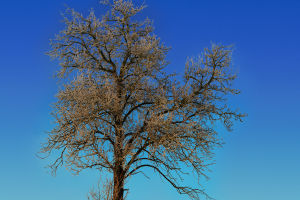Snow mountains, also known as alpine snow areas, refer to the regions in high-altitude areas where the temperature is low, and there is abundant snowfall that accumulates over a long time.
Snow mountains are typically located above 3,000 meters above sea level, and the temperature is extremely low, which results in the formation of a significant snow layer that eventually forms tall, snow-capped mountains.
The Earth's surface is governed by certain laws. As the altitude rises, the air becomes thinner, and the temperature drops. The air flows more vigorously at higher altitudes, which leads to even lower temperatures.
Generally, the temperature drops by 6 degrees Celsius for every 1000 meters of ascent. A mountain situated at a high altitude, say 6,000 meters, can be about 36 degrees Celsius cooler than sea level, which is almost a certain temperature below zero.
The snow line is the lower boundary of the perennial snow belt, that is, the balance line where the annual snowfall is equal to the annual ablation. The annual snowfall above the snow line is greater than the annual melting amount, and the snowfall accumulates year by year, forming perennial snow accumulation.
A snow line is a climate marker. Its distribution height is mainly determined by conditions such as temperature, precipitation, slope, and aspect. The height of the snow line decreases from low latitudes to high latitudes.
The climate conditions in the snow mountain are very harsh. The temperature is usually extremely low, most of the time below zero, and even as low as below minus 40 degrees.
Moreover, the low air humidity in high-altitude areas causes a significant temperature difference between day and night. This harsh climate makes snow mountains an ecosystem in an extreme environment where only a few plants and animals can survive.
The impact of snow mountains on the environment and ecosystem is crucial. The snow cover in snow-capped mountains is one of the most important freshwater resources on earth, providing a reliable water source for ecosystems and human societies in low-altitude areas.
Additionally, the snow mountain is also the habitat of many rare and endangered species. Protecting the snow mountain ecosystem is an important means of maintaining biodiversity and ecological balance.
Snow mountains have a great influence on atmospheric temperature. They affect the growth period and maturity period of crops. For instance, the growth period in tropical areas is short, and crops can be sown three times a year, whereas crops in cold regions can only be sown once a year.
Snow mountains can regulate the Earth's temperature, and glaciers and snow mountains play a vital role in the global heat balance and water balance. The role of snow-capped mountains in regulating the global climate is to store a vast amount of fresh water and affect the global water balance.
The high albedo allows a large amount of solar radiation to return to space, playing a crucial role in regulating the ecological temperature of the climate in the sky.
Moreover, snow mountains are also ideal places for people to carry out outdoor sports and travel. On the snow mountain, people can engage in various activities such as skiing, rock climbing, hiking, etc., while enjoying the beautiful scenery and unique ecological environment of the snow mountain.
However, with the increase in human activities, the ecological environment of the snow mountain has also been threatened. Therefore, it is crucial to protect the ecological environment of snow-capped mountains and promote sustainable tourism.
Snow mountains are vital ecological areas that have a profound impact on the environment and ecosystem. They play a crucial role in maintaining the global water balance, regulating the Earth's temperature, and supporting biodiversity.
Therefore, it is essential to protect the snow mountain ecosystem and promote sustainable tourism to preserve the ecological balance of these regions.


